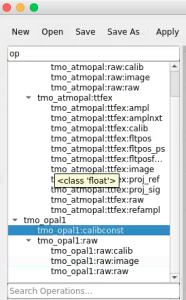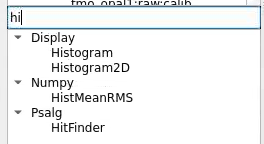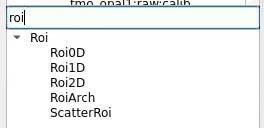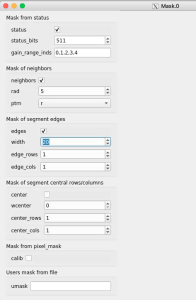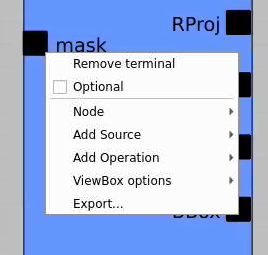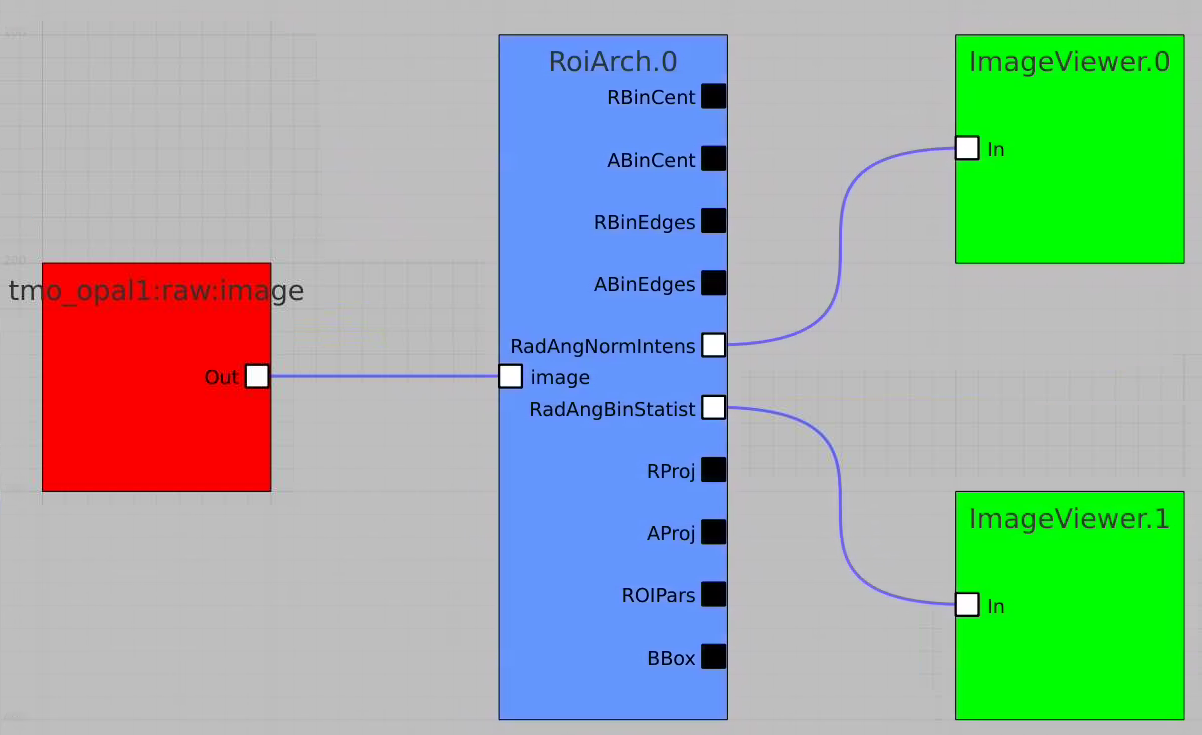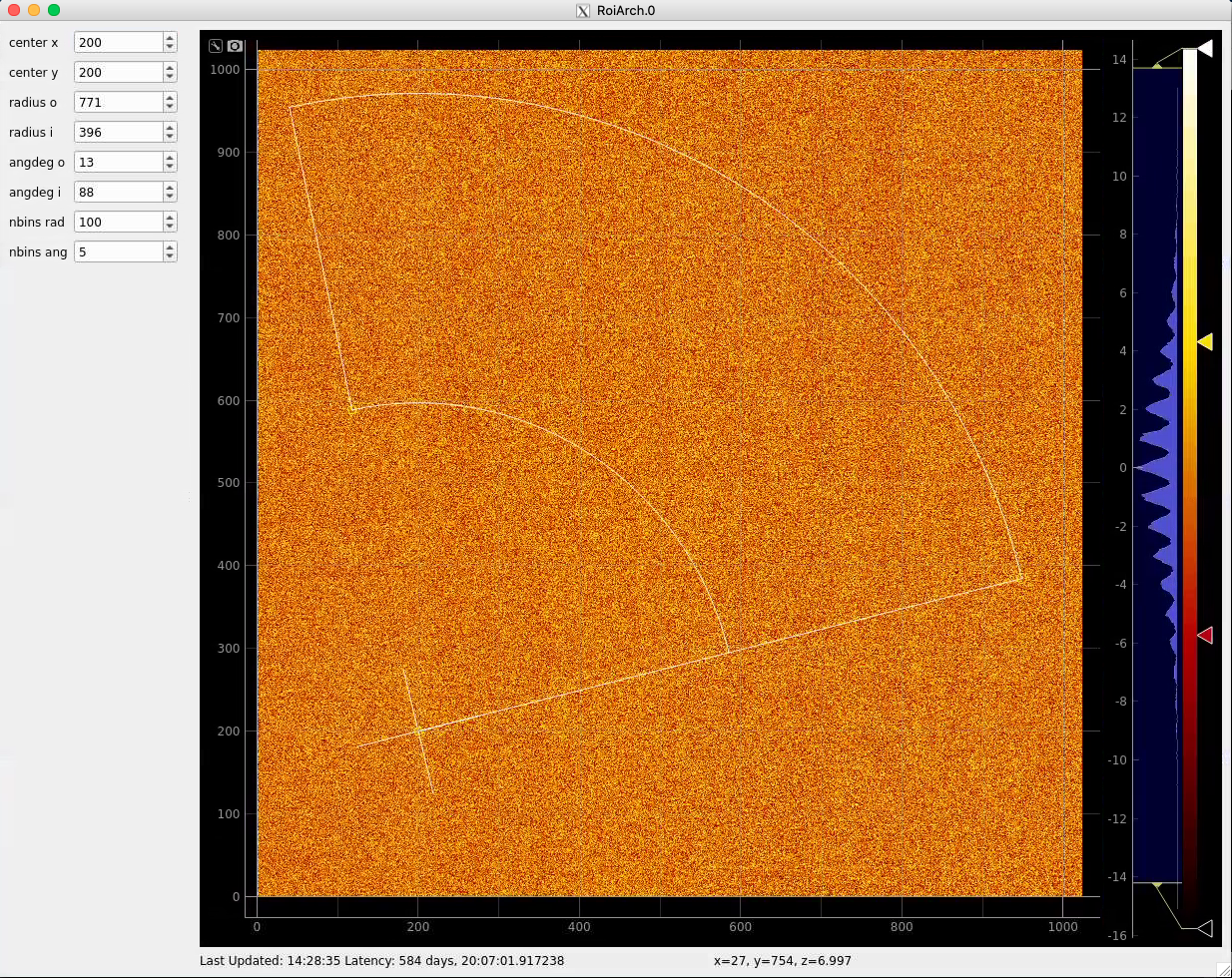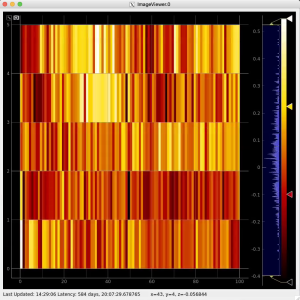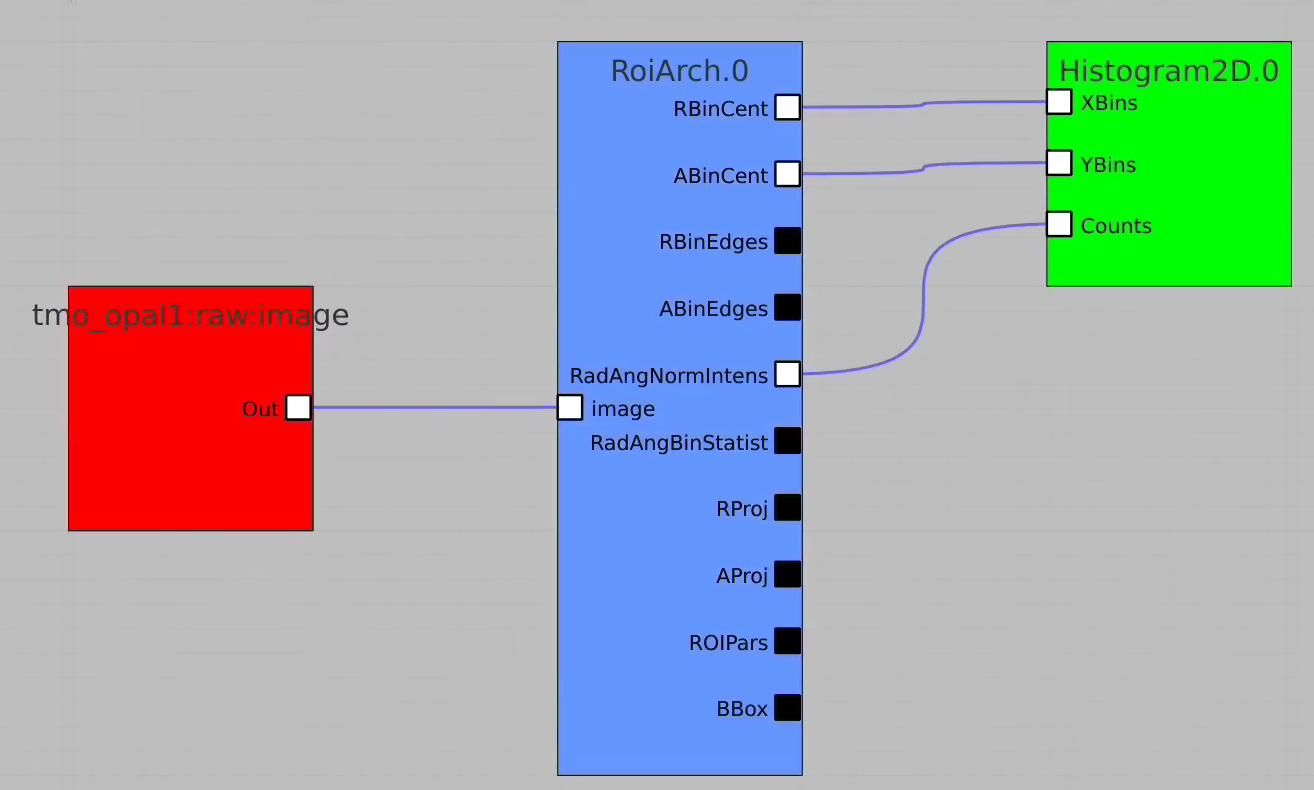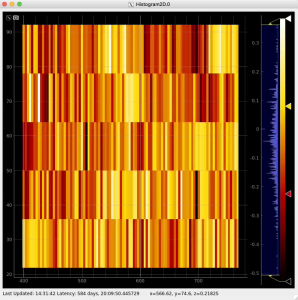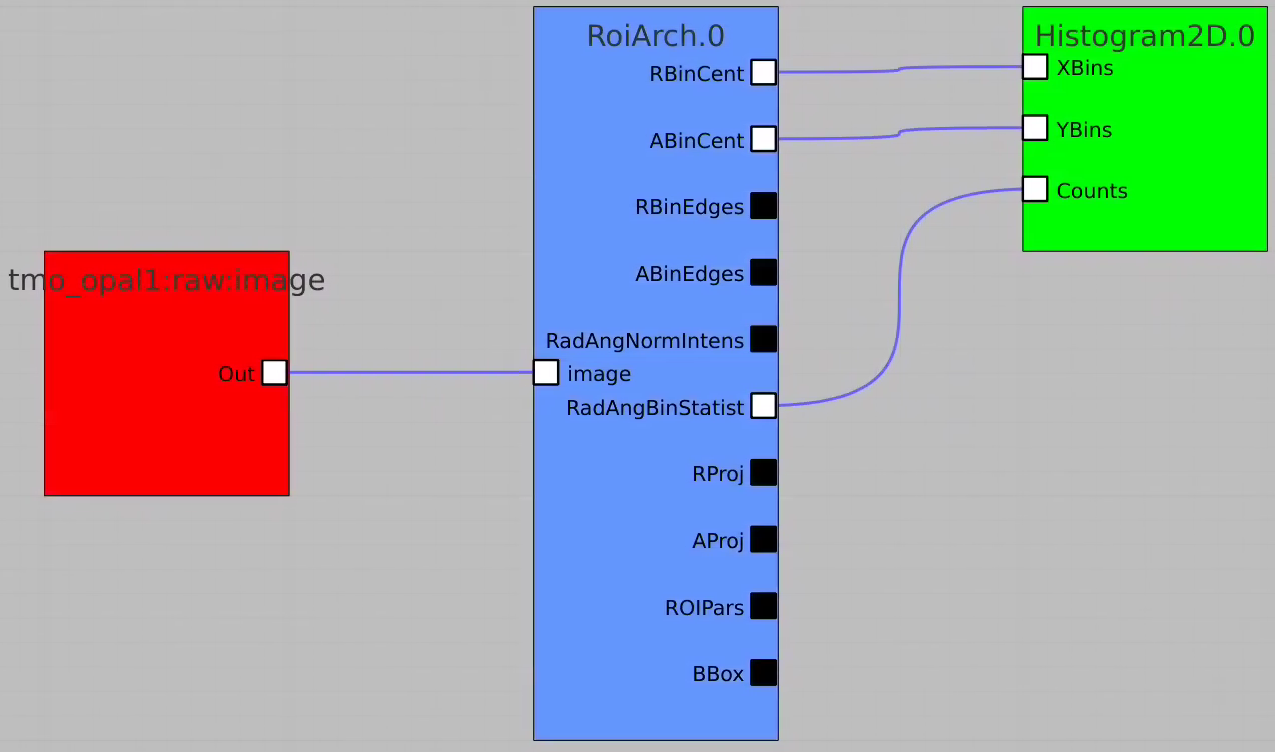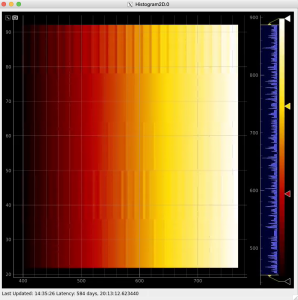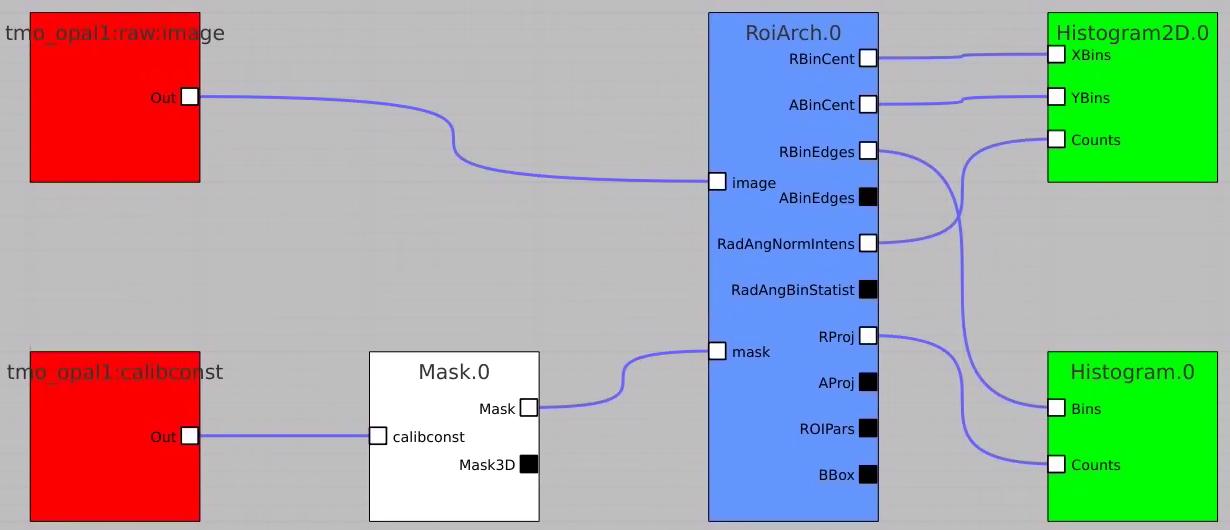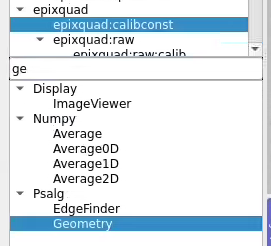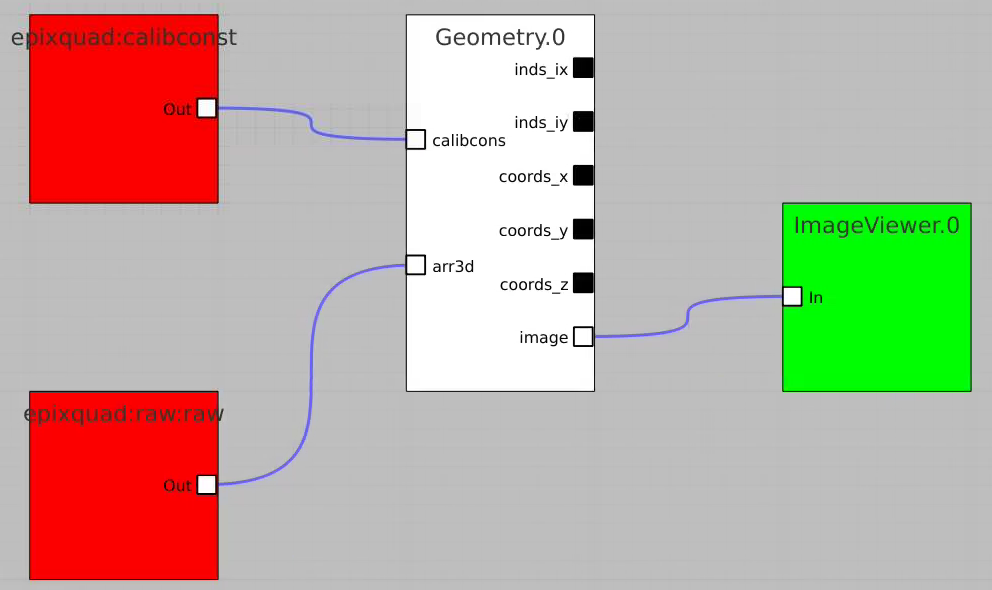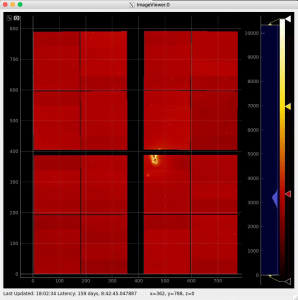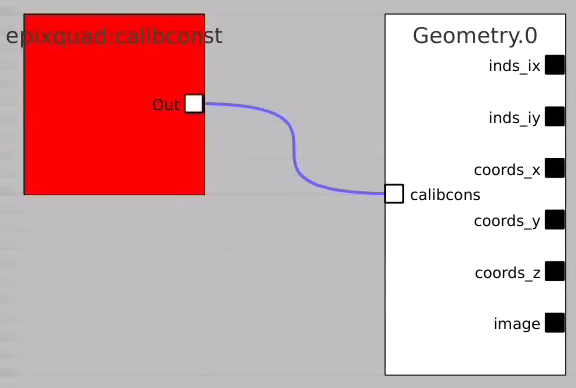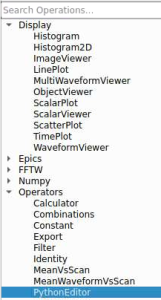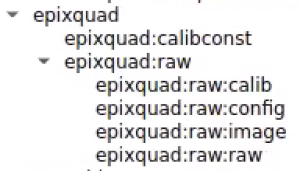Command to start
ami-local -b 1 -f interval=1 psana://exp=tmoc00118,run=222,dir=/cds/data/psdm/prj/public01/xtc
Finding control nodes for this example
Mask
Mask (2D or 3D array) is created mainly from calibration constants of particular detector.
For example, bring control nodes to the flowchart and connect their terminals as shown below.
Click on "Apply" button, then click on Mask.0 and ImageViewer.0 control nodes to open editor for mask parameters and mask image viewer.
Adjust the mask parameters using editor window and click on "Apply" button again. Mask image will have changed according to set parameters.
RoiArch
Simple example
In simple case we use 2D image as input array without mask and ImageViewer with bin numbers in stead of actual scales for radial and angular dimensions.
First, bring RoiArch to the flowchart, right-click on input "mask" terminal and select "Remove terminal" on pop-up window. (Currently ami2 does not work with optional terminals).
Bring other control nodes to the flowchart and connect them as shown below and click on "Apply" button.
Click on RoiArch control node and adjust desired ROI region on pop-up window.
Image can be moved and zoomed by click-and-drag and scrolling mouse, respectfully.
ArchROI can be adjusted using 3 control points for center, external radius and entire rotation, internal radius and arch angular size. Alternatively, ArchRoi parameters can be adjusted using editor for parameters in the left side of the window. Click on "Apply" button after mask parameters are set.
Then click on ImageViewer.0 and ImageViewer.1 control nodes to see images for r-angle per pixel normalized intensity and associated pixel per bin statistics.
Plot radial-angular distribution with scales scale
R-angular plot with scales for normalized intensity
R-angular plot with scales for per-bin pixel statistics
Radial and angular projections with normalized per pixel intensity
Arrays of N+1 bin edges should be used for 1D histograms
Apply mask
Bring RoiArch to the flowchart, connect th Mask.0 control node output (2D) Mask with RoiArch "mask" input terminal.
Then build other control nodes as in previous examples, click on "Apply" button, etc.
Geometry and Detector Image
Command to test
ami-local -b 1 -f interval=1 psana://exp=uedcom103,run=7,dir=/cds/data/psdm/prj/public01/xtc
Use geometry with image
Select optional geometry file
By default geometry data comes from DB associated with experiment or detector. Optional geometry file can be specified through the click on Geometry Control Node to deal with parameters window.
Click on "select" button and select desired geometry file, e.g.
Use Geometry without input array
Add the Geometry Control Node as usually and remove input terminal for arr3d. Click on "Apply" and use any geometry output parameters except "image".
PythonEditor for calib components
Command to test
ami-local -b 1 -f interval=1 psana://exp=ueddaq02,run=569,dir=/cds/data/psdm/prj/public01/xtc
Composition of Control Nodes for example
Implementation of the class calib_componenyts
Will be available in releases grater than ps-4.5.24
code example is also available in the head of this module
Code example for PythonEditor
TODO
common mode correction methods are not available yet in this example.

